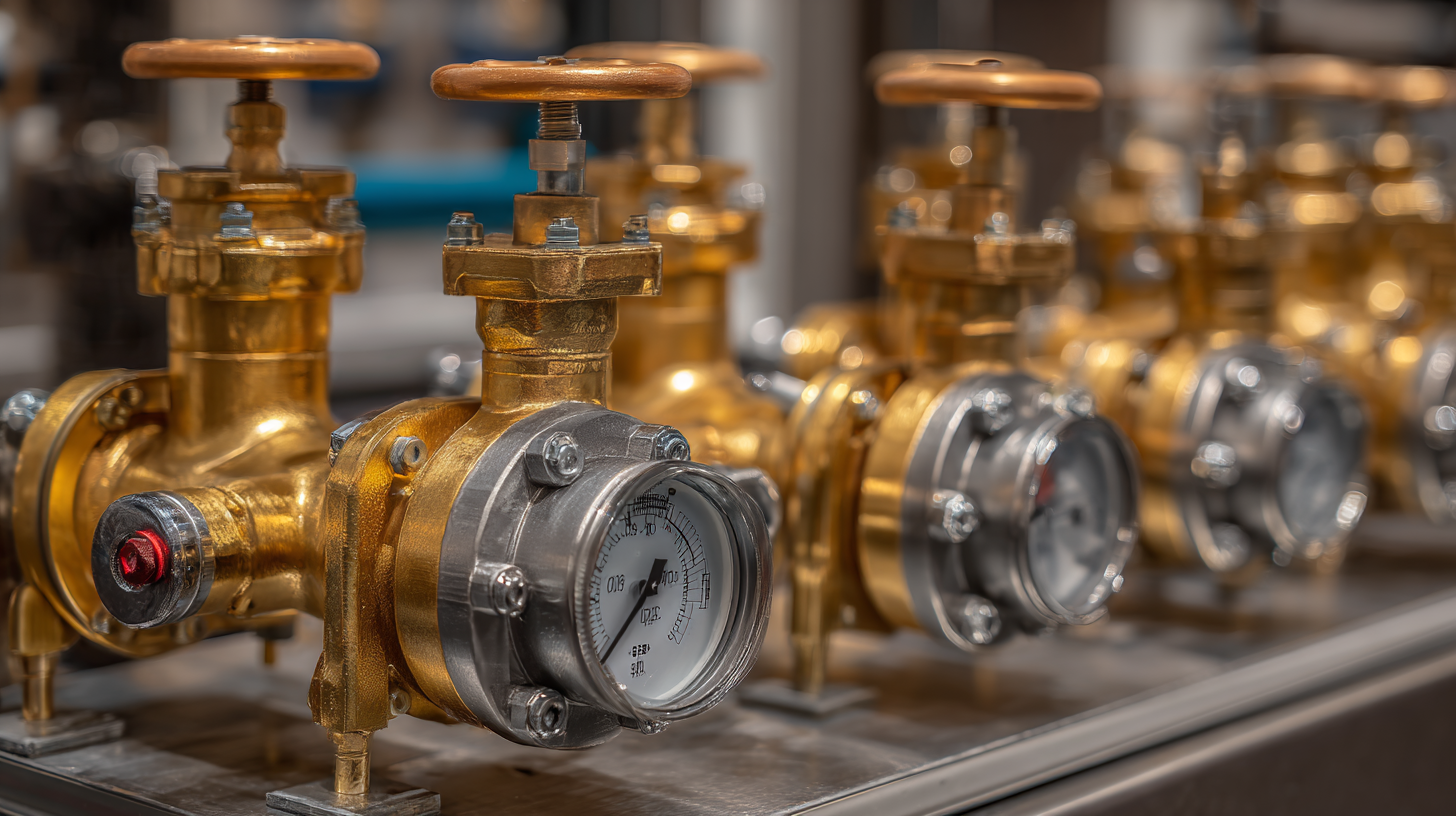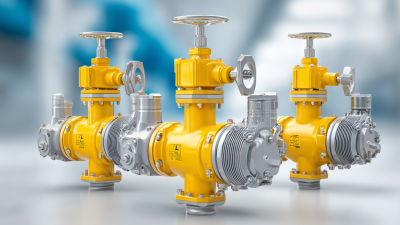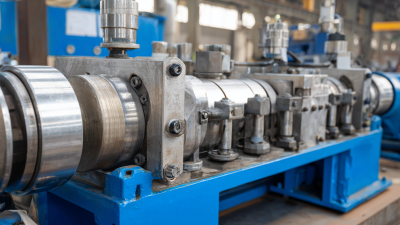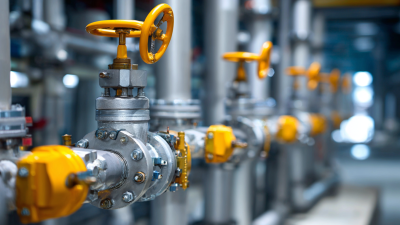MENUMENU
As industries increasingly turn to automation and efficiency, the demand for high-performance pressure valves continues to grow. According to a recent market analysis by ResearchAndMarkets, the global pressure valve market is projected to reach USD 40 billion by 2025, with a compound annual growth rate (CAGR) of over 5%. This surge is driven by advancements in manufacturing processes, safety regulations, and the growing need for robust fluid control in sectors such as oil and gas, pharmaceuticals, and water treatment.

In this context, understanding the intricacies of pressure valves becomes crucial for buyers seeking optimal performance and reliability. The year 2025 is anticipated to present new opportunities and challenges, particularly with the emergence of innovative materials and technologies that enhance valve efficiency. Industry leaders like Emerson and Valvitalia are already investing in smarter valve solutions that incorporate IoT capabilities, providing real-time monitoring and predictive maintenance features.
This ultimate guide aims to highlight the top five pressure valves to watch for in 2025, equipping buyers with essential insights to make informed decisions. By examining current trends, technological advancements, and market forecasts, we empower stakeholders to select the best pressure valve solutions tailored to their specific operational needs, ensuring safety and efficiency in their applications.
As we look towards 2025, the pressure valve industry is poised for significant advancements driven by innovation in technology and materials. According to a report by MarketsandMarkets, the global pressure relief valve market is expected to reach $5 billion by 2025, growing at a CAGR of 4.7% from 2020. This growth is largely attributed to the increasing demand for safety measures in various industries, including oil and gas, chemicals, and water management. Innovations such as smart pressure valves equipped with IoT technology are expected to play a pivotal role in enhancing operational efficiency and safety protocols.
One of the noteworthy innovations includes the integration of advanced materials, such as high-performance polymers and composites, which provide better resistance to corrosion and wear, thus extending the lifespan of pressure valves. Furthermore, the implementation of predictive maintenance technologies, backed by AI and machine learning, allows for real-time monitoring of valves, reducing downtime and maintenance costs significantly. Reports indicate that industries utilizing such technologies could see a reduction in maintenance expenditures by up to 30%. As these innovations unfold, buyers looking for reliable solutions in pressure management will find themselves equipped with better tools to meet the evolving demands of the market.
When selecting pressure valves, several key factors play a crucial role in determining performance and suitability for specific applications.
First and foremost, the type of medium flowing through the valve—be it gas, liquid, or steam—greatly influences the material selection and design of the valve.
Corrosion resistance, thermal stability, and pressure ratings must align with the medium's properties to ensure optimal durability and functionality.
Another vital factor is the pressure range and flow characteristics required for the specific application.
Understanding the operational environment and pressure fluctuations can help buyers choose valves that maintain stability and efficiency.
Additionally, compatibility with automation systems and ease of maintenance can significantly enhance overall performance. Buyers should prioritize valves that offer reliable sealing and minimal leakage, as these characteristics directly affect operational efficiency and safety in high-pressure scenarios.
As the demand for efficient pressure management systems continues to rise, understanding the comparative strengths of leading pressure valve brands becomes essential for buyers. Recent market analysis from Smithers Pira indicates that the global pressure valve market is projected to reach USD 7.61 billion by 2025, growing at a CAGR of 5.2% from 2020. This growth is fueled by the increasing need for sophisticated fluid control solutions in industrial applications, particularly in oil and gas, chemical processing, and water treatment sectors.

In this competitive landscape, brands such as Parker Hannifin, Emerson, and Schneider Electric are distinguished by their innovative technologies and robust performance. For instance, Parker’s pressure valves are renowned for their durability and efficiency, making them a preferred choice in high-stakes operations. Meanwhile, Emerson's Fisher brand is widely celebrated for its advanced digital valve technology, which enhances precision in pressure regulation.
According to a 2021 Frost & Sullivan report, Emerson holds approximately 15% of the market share in the pressure valve segment, highlighting its influence and innovation in driving industry standards. The variety and specialization of these brands illustrate the importance of thorough market evaluation for buyers seeking to optimize their pressure management systems in 2025 and beyond.
When searching for high-quality pressure valves, there are several essential features that discerning buyers should consider. First and foremost, material quality plays a critical role in the durability and performance of a pressure valve. Opting for valves made from robust materials such as stainless steel or high-grade alloy can ensure better resistance to corrosion and wear, ultimately extending the valve's lifespan. Additionally, the compatibility of the material with the specific media it will handle (such as steam, gas, or liquids) is crucial for maintaining integrity over time.
Another key feature to evaluate is the valve’s pressure rating and temperature limits. A valve should not only perform well under specified pressure conditions but also retain reliability across a range of temperatures. This aspect is essential for ensuring the system operates safely under varying conditions. Furthermore, look for advanced design features such as anti-surge capabilities and effective sealing mechanisms, which can significantly enhance performance and reduce maintenance frequency. These factors, combined with the manufacturer's reputation and customer support, make for a smart investment in pressure valve technology.
| Valve Type | Material | Pressure Range (psi) | Temperature Range (°F) | Key Features |
|---|---|---|---|---|
| Ball Valve | Stainless Steel | 10 - 1500 | -20 to 350 | Durability, Low Flow Resistance |
| Gate Valve | Cast Iron | 50 - 3000 | -10 to 450 | Tight Sealing, High Flow Capacity |
| Globe Valve | Brass | 20 - 600 | -40 to 300 | Excellent Flow Control, High Precision |
| Check Valve | PVC | 5 - 150 | 0 to 140 | Backflow Prevention, Lightweight |
| Pressure Relief Valve | Alloy Steel | 15 - 4000 | -30 to 500 | Automatic Pressure Regulation, Safety Feature |
The pressure valve market is poised for significant transformation as we approach 2025, driven by advancements in technology and changing industry demands. According to a recent report by ResearchAndMarkets, the global pressure relief valve market is projected to grow at a CAGR of 5.2%, reaching approximately $4.5 billion by 2025. This growth is fueled by the increasing focus on safety and compliance regulations across various industries, particularly in the oil and gas, chemical, and manufacturing sectors.

One notable trend is the integration of IoT and smart technologies into pressure valve systems. As per a report by MarketsandMarkets, the smart pressure valve segment is expected to grow from $800 million in 2020 to over $1.5 billion by 2025, emphasizing the demand for remote monitoring and automated control systems. These innovations not only enhance operational efficiency but also provide real-time data analytics, allowing industries to anticipate failures and reduce downtime, thus improving overall productivity. The shift towards sustainability is also influencing the adoption of advanced materials and designs, resulting in more durable and eco-friendly pressure valves, further aligning with global sustainability goals.





